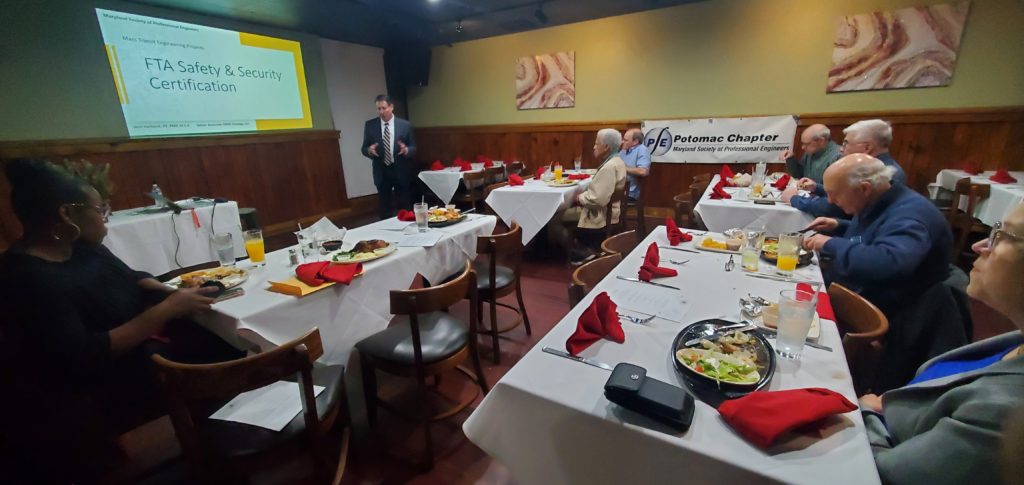Vern Hartsock, P.E. , PMP, M.S.E gave a talk on “FTA (Federal Transit Administration) Safety and Security Certification in Transit Projects“ on February 23rd, 2023. The talk was presented at the LaCurva Tex-Mex Bar&Grill in Laurel, MD.
Speaker Biography:

Vern is a multistate-licensed professional engineer and has over 40 years of experience in technology with 31years of experience in Transit Systems. Vern currently works as an engineering consultant for OMNI Strategy, LLC., and is assigned as the Safety and Security Certification Manager supporting the WMATA Radio Replacement Project. Vern retired from the Maryland Transit Administration (MTA) after 30 years of service. Vern previously served as the Director of the MTA Purple Line project, Vern was responsible for over $2B in design and construction work. As the MTA Chief Engineer, Vern was responsible for delivery of the annual $400M capital program and oversaw all engineering disciplines including Civil, Structural, Mechanical/Electrical, Systems, Rolling Stock, and Quality Assurance/Quality Control. Vern has extensive experience in overseeing the development of specifications, plans, engineer’s estimates, and project schedules.
Vern is a frequent engineering conference speaker and has previously held technical positions with CSX Transportation, General Instrument Corporation, and Aircraft Armaments Industry (AAI). He also has worked for 5 years as an adjunct instructor and textbook author for Howard Community College. Vern holds a Bachelor of Science degree in Computer Science & Information and a Master’s Degree in Software Engineering from the University of Maryland University College.
Vern grew up in Baltimore and lived on 33rd St, just 1 block from the former Memorial Stadium. Vernon has a daughter, Brittany and resides with his wife Roxana in Anne Arundel County, Md. In his free time, Vern enjoys home improvement projects, RV camping, and golf.
Topic:
The talk addressed how the certification process takes place during the design, construction, and testing phases of a project. The process begins with a preliminary hazards analysis that results in identifying certifiable elements for which hazards need to be mitigated. Ultimately, the certification is proof of the mitigation.





